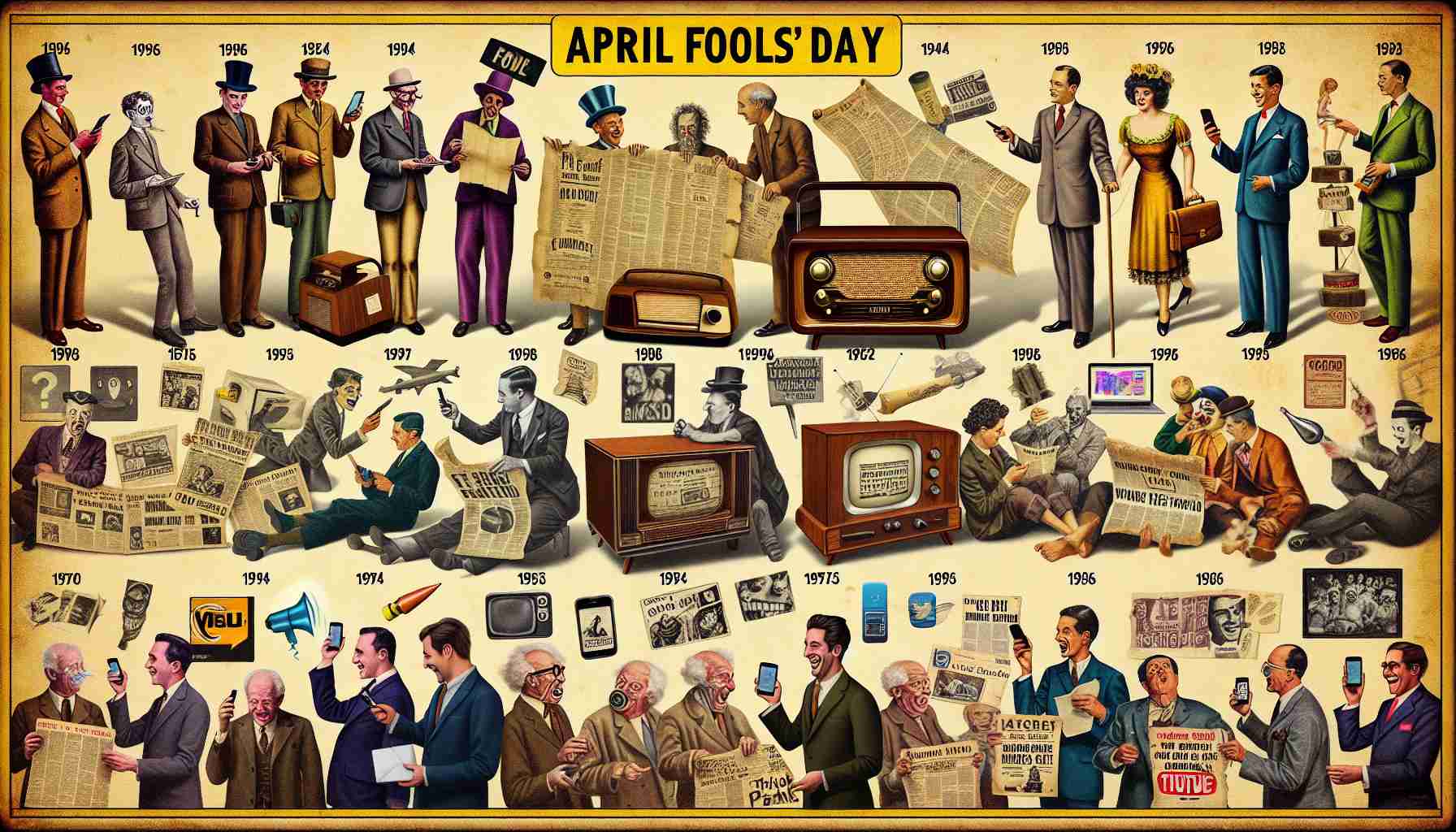April Fools’ Day has long been a time for brands to showcase their playful side with clever pranks and jokes. However, the growing influence of artificial intelligence (AI) is changing the landscape of these pranks and raising questions about their authenticity. As we approach April 1st, consumers are advised to approach these marketing gimmicks with caution and skepticism.
Marketing pranks on April Fools’ Day can have various outcomes, ranging from positive reactions and social media shares to confusion, derision, or even negative consequences. According to marketing professor Vivek Astvansh from McGill University, what one person finds funny, another might consider offensive. This highlights the inherent risk of these pranks, as they can either endear customers to a brand or sour their perception of it.
With the advent of AI technology, the potential for high-tech pranks has increased. Generative text-to-video tools can now generate realistic scenes based on simple instructions, while chatbots can come up with endless advertising ideas on command. The use of AI in these pranks raises important questions about authenticity and the ability to distinguish between jokes, facts, and deepfakes.
The release of OpenAI’s ChatGPT program, referred to as GPT-4, has further expanded the capabilities of AI in generating ads and content. According to Astvansh, many upcoming April Fools’ Day ads are expected to be motivated by AI tools like GPT-4. However, the power of AI to transcend human capacity has been a part of corporate pranks even before these recent advancements.
Looking back at past pranks, some have caused misunderstandings that could potentially be exacerbated by AI. For example, in 2019, Google announced the ability to communicate with tulips through a language called “Tulipish.” While this was clearly a joke, it exemplifies how technology can blur the line between reality and fiction.
One notable example of an April Fools’ Day prank gone wrong was the recent rebranding stunt by Volkswagen AG. The company announced that its American division would change its name to “Voltswagen.” Despite initial doubts about the authenticity of the news release, several news outlets reported on it. Volkswagen’s attempt at humor fell flat due to its previous “diesel dupe” scandal, which damaged the company’s credibility.
Other pranks that backfired include false reports of Trader Joe’s closing all its stores and fake confirmation emails from Deliveroo for large food orders. The accessibility and low cost of AI tools now allow more companies to deploy technology in their pranks, but this comes with risks.
To guard against deception, disclosure becomes crucial. Experts suggest that companies should clearly state if their content was generated using AI tools. Digital watermarking, which tags AI-generated content to distinguish it from real images, can also help users identify what they are seeing.
While AI has the potential to create harmless and entertaining pranks, it can also be misused to deceive people. As AI technology continues to advance, it is important for companies to strike a balance between humor and ethical responsibility.
FAQs:
1. What is April Fools’ Day?
April Fools’ Day is a day traditionally known for playing pranks and jokes on others.
2. How does AI impact April Fools’ Day pranks?
AI technology can generate realistic content and ads, blurring the line between jokes and reality. This raises questions about authenticity and the ability to distinguish between real and fake information.
Sources:
– [McGill University](https://www.mcgill.ca/)
– [OpenAI](https://openai.com/)
– [The Canadian Press](https://www.thecanadianpress.com/)
Industry Overview:
The article discusses the impact of artificial intelligence (AI) on April Fools’ Day pranks in the marketing industry. April Fools’ Day is traditionally a time for brands to showcase their playful side with clever pranks and jokes. However, with the growing influence of AI, these pranks are becoming more sophisticated, raising questions about authenticity and the blurring of the line between reality and fiction.
Market Forecasts:
There are no specific market forecasts mentioned in the article. However, it highlights the increasing use of AI in generating content and ads for April Fools’ Day pranks. With the release of AI tools like GPT-4, it is expected that many upcoming pranks will be motivated by AI-generated content.
Issues and Risks:
The article emphasizes the risks associated with April Fools’ Day pranks, especially in the era of AI. What one person finds funny, another might consider offensive, highlighting the inherent risk in these pranks. The use of AI raises questions about authenticity and the ability to distinguish between jokes, facts, and deepfakes.
The article also mentions notable examples of pranks that backfired, such as Volkswagen’s rebranding stunt and false reports of Trader Joe’s store closures. These incidents demonstrate the potential negative consequences and damage to a brand’s credibility.
Related Links:
– McGill University: The university mentioned in the article as a source for Vivek Astvansh, a marketing professor.
– OpenAI: The company behind ChatGPT (GPT-4), which is mentioned in the article as an AI tool that can generate ads and content.
– The Canadian Press: The source cited in the article.
The source of the article is from the blog tvbzorg.com

